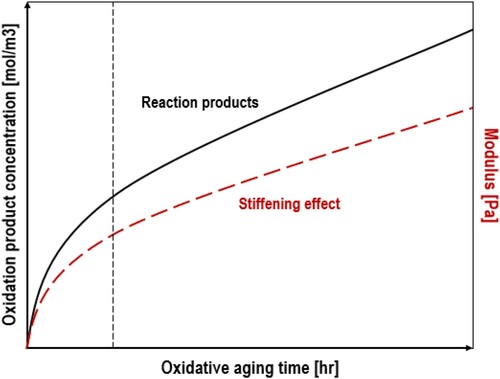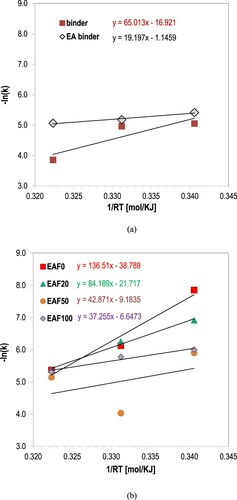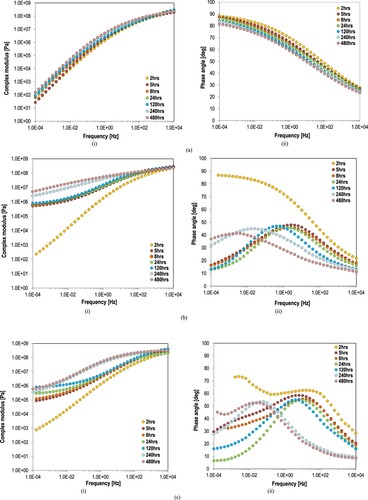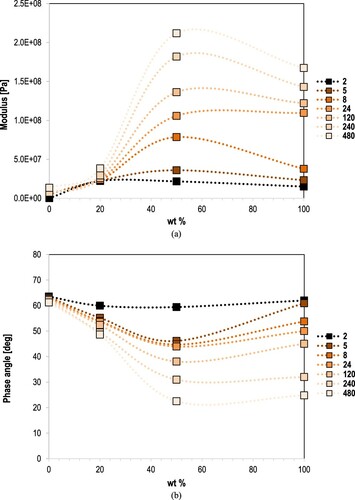Figures & data
Table 1. Properties of epoxy binder (type BIX).
Table 2. Name and composition of studied materials.
Figure 2. IR spectra of (a) asphalt and EA binder, (b) filler and (c) asphalt binder with filler, or asphalt mastic, and EA mastic (after oven-conditioning at 100°C for 480 h).

Figure 3. Change of (a) sulfoxide and (b) carbonyl compounds of asphalt (top) and EA binder (bottom) over oven-conditioning at 80°C, 90°C and 100°C.
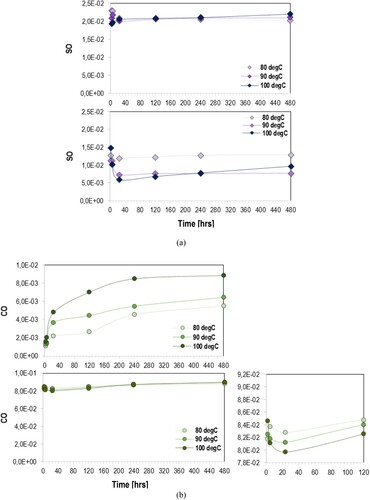
Figure 4. Change of (a) sulfoxide and (b) carbonyl compounds of asphalt (top) and EA mastic (bottom) over oven-conditioning at 80°C, 90°C and 100°C.
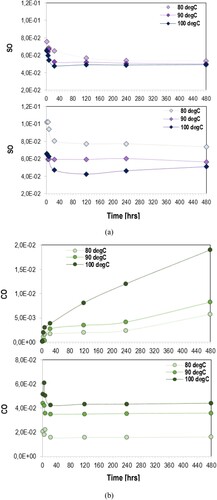
Figure 5. Incremental values of carbonyl compounds asphalt (top) and EA binder (bottom), (a) without and (b) with filler particles, over oven-conditioning at 80°C, 90°C and 100°C.
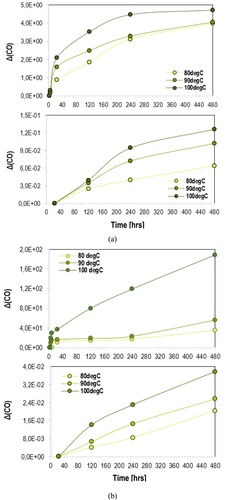
Table 3. Kinetic parameters of studied materials.
Figure 7 Master curves of (a) complex modulus and (b) phase angle of studied materials after oven-conditioning for 480 h at 100°C.


